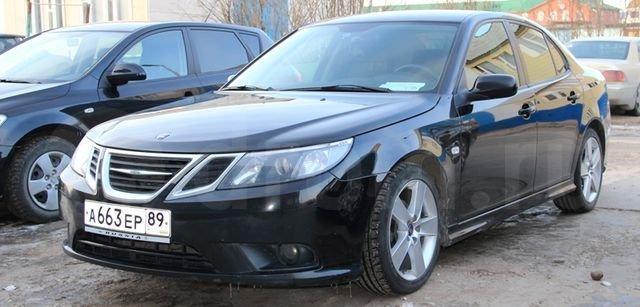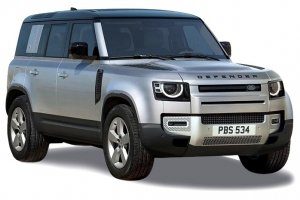
Saab 9-3 2007 review
Saab has changed more than 2000 things in the new lineup to meet huge sales expectations. While the platform remains, the biggest news is the addition of all-wheel drive.
Given Saab's ability and penchant for big torque and front-wheel drive. In the history of the brand, there are a number of models that could guarantee all-wheel drive; involuntary rebuilding in Viggen anyone? but it's here now.
Destined for our shores early next year, Saab's XWD designation for the latest generation Haldex 4 system will hopefully put the lineup back in the spotlight.
GM Premium Brands Australia director Parveen Batish is looking to further boost sales in 2007. He says the 9-3 will further improve the brand's performance next year.
“Last year we made 1650 and this year we are tracking a 16.5% increase. We aim to rise by more than 30 percent by June 20th. It was a great start,” says Mr. Batis.
“We have made a lot of changes to how we go to market. Instead, we have moved from giving discounts to dealers to offerings to customers. We're trying to be more customer-focused."
The brand's stated priorities are the new 9-5 and an SUV (which seems to be for the 9-4 badge), and the compact car built on the next generation Astra platform is poised to change the sales tables.
Mr Batish says Saab can only compete with the rest of the premium brands in Australia with a car below 9-3 and an SUV.
“The only way we're really going to compete is if we go both ways. It would be great to have these (small car and SUV), we don't have them - there are discussions all the time and we look in these directions.
“The new 9-3 will help increase sales and you have to make money to invest in products,” he says.
The new 9-3 range is expected to go on sale in Australia this November, with flagship Aero XWD and TTiD models to go on sale in the first quarter of 2008.
The base model is still powered by the 1.8-litre 110kW/167Nm powertrain, while 129kW/265Nm or 155kW/300Nm models are also offered for the new 9-3.
The Aero gets 188kW (up 4kW) and 350Nm (or 206kW and 400Nm in the XWD model), while the existing 110kW/320Nm diesel is complemented by a 132kW/400Nm two-stage turbo engine equipped with a particulate filter.
Those tech executives who've skimmed the German specs before know the Haldex name from some Audi and Volkswagen products, but Saab is claiming a brand new first use of the fourth system. Chief among the attributes is proactive tuning, which claims superior response to lack of traction, with automotive electronics and traction aids used to determine which wheel is best served by torque.
The system also includes an electronic limited-slip rear differential for extra traction, as well as a yaw control task to help stabilize the Aero XWD during hard braking and cornering.
All-wheel drive is an Aero-only feature for now, paired with a turbocharged 2.8-liter V6 engine - expect a price premium of several thousand dollars - in line with Germany's price increase for all-wheel drive.
The second newcomer to the Saab 9-3 lineup to wear the Aero badge in its European home market is the second turbodiesel model, the TTiD two-stage turbodiesel.
Still a 1.9-liter displacement, the turbocharger has two turbos - one small and one large - that switch based on engine speed to provide the best possible response to power output.
The new diesel offers 132 kW and 400 Nm of power with a claimed fuel consumption of less than 6.0 liters per 100 km.
The new model is easy to choose as a Saab. A new face that uses an old hood from the Saab history books and the legacy face of the Aero X concept car offer enough DNA for identification.
The new bi-xenon headlights on top models get an LED brow that works on the same principle as BMW's crown rings, providing daytime running lights as well as a signature new look.
The bumper profiles on the Aero have been redesigned, the door handles have a more integrated look, the taillight lenses are now clear, and the sides of the SportCombi have been stripped of rubbing strips for a cleaner look, says Saab.
The base platform remains the same, albeit redesigned, in part to accommodate a rear-wheel-drive machine, while work is underway to reduce 9-3 noise.
A six-speed manual or automatic transmission is offered, the latter getting a sport mode that offers more aggressive shifting habits.
Prices are still far from set, but Saab Australia is aiming to bring the price of the new model closer to the current range.
With a target of 3000 units a year, 9-3 will be critical to Saab's plans. It's a competent, powerful and fast machine, but only time will tell if the brand can win back the less dedicated ones.
Drive unit
With the memories of the Viggen still strong, it was almost a relief to get behind the wheel of an all-wheel drive Saab.
Not the somewhat cynical 9-2X, which the Saab hierarchy felt was a mistake and will not be repeated, but the new 9-3 XWD.
The 6kW, 188Nm turbocharged version of the Aero V350 and its recent predecessors handle much better than the gleaming and intimidating Viggen.
The prospect of all four wheels doing smart electronic stuff to make all that Swedish grunt land was to be expected as the Swedish staff put in a few pre-production test cars for some rides in loose dirt, dry bitumen and a long, ultra-slippery sump filled with water. .
Our escorts rode on shotguns; after all, these were rare test cars, but there were no dire warnings of imminent death for misbehaving.
Throwing the first car across the U-shaped dirt track certainly put the guards on their guard, but the traction, stability, and overall capabilities of the all-wheel-drive system were significant.
The electronic stability control threshold felt a little less intrusive, allowing the rider to play with the tail a bit in the mud or roam the body in various states sideways, but with a decent level of control.
Repeated laps didn't ruin the first impression, with the turbo V6 growling to the ground a lot and picking up speed quickly on a short back right between the dirt and the body, despite having three chicanes.
Other models have been available for road use, and while the ethanol-powered XNUMX-litre BioPower engine has a lot to offer, the new diesel is a big step forward for Saab.
While sales of the diesel SportCombi have been plentiful in Australia, the current powerplant has been blamed for excessive noise, according to the company's Australian division.
The new 9-3 has been fitted with more engine bay insulation, and as a result the new turbodiesel is much quieter, although you still know its design at idle.
Power delivery has been vastly improved, offering a wide range of torque and power in the upper rev ranges; more unlike a diesel and more like a gasoline engine than ever.
Acceleration in gear is sufficient, and fuel consumption is economical.
Time in the BioPower 2-litre turbo engine shows that the engine can offer plenty of power as well as a more voracious behavior.
The engine sound gets harsher at full throttle, but other than that, the powerplant behaves just like the rest of Saab's engine lineup; good torque and power, and not a nasty engine note.
